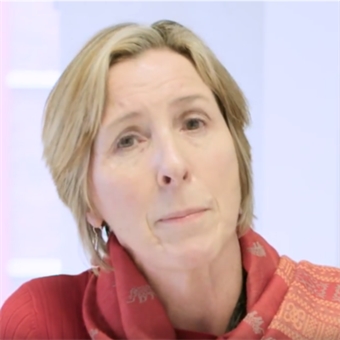Developing leadership maturity in an era of increasing complexity

Not all work problems are complex as Snowden points out so elegantly in his seminal article about decision-making. However it’s clear from my recent client work that leaders at all levels are being asked to deal with ever-more complex and uncertain contexts, and that many are experiencing this as testing and stressful.
Multi-layered challenges for leaders
Many factors are contributing to this trend towards increasing complexity. A globalized economy, advances in technology, demographic shifts, a multi-generational workforce, the constant pressure to do more with less, shifting employment contracts and permeable organizational boundaries all add layers of difficulty and challenge.
And this in turn seems to be requiring leaders to develop a new, more ‘mature’ set of leadership skills. This is an expansion of what we normally see leaders doing rather than a whole new way of leading. Some refer to it as vertical development.
In the political arena, many people have become a bit fed up with and mistrustful of the interconnected complexities that have developed in our institutions over the last few decades. Through the election of Trump and the opting for Brexit, they are demanding more straightforward forms of leadership, and simpler-sounding solutions. My experience indicates that this simplistic approach is doomed not to deliver in the longer term, although it may feel gratifying for a while.
Meanwhile in private and public sector organisations, things continue to get messier and messier and leaders need to learn how to deal with this.
What does ‘mature’ leadership involve?
Most medium and large-sized organisations train their leaders to master the art of delivering agreed outcomes through people. This involves a range of skills, taught as part of standard leadership programmes, such as envisaging, thinking strategically, planning, delegating, reviewing, coaching, teambuilding, managing people etc.
To be able to deal with more complex contexts, deeper capacities are required which are not so easy to teach. Research by Kempster at al. indicates that these capacities have to be learned and embedded over time through a commitment to practicing new forms of leading in situ, and reflecting on these in an open and honest way.
This is not all plain-sailing however. This type of development may also force leaders to untangle the impact of their early history on their behaviours, ideally with the support of a mature coach.
Core complexity capacities can be summarised as:
- seeing and working with patterns and connections;
- welcoming ambiguity, contradictions and paradoxes;
- developing a multi-framed approach; and
- thinking long-term (3-5 years plus).
The table below more fully illustrates the expansion in capacity required. As indicated already, this is not about moving away from traditional skills, but ‘including’ them as part of a wider set.
|
|
Ensures planned outcomes by driving progress
| Continually tracks and anticipates change at multiple levels – seeing patterns and connections, and ‘pulling’ the right levers at the right time
|
Clarifies accountabilities and helps sort out conflicts or stuckness
| Regularly convenes cross-boundary discussions that clarify purpose, intentions, values and priorities. Also surfaces hidden agendas or anxieties in a non-anxious, non-defensive way
|
Creatively motivates others to work towards clear goals, while seeking efficiencies and improvements
| Creates a picture of the change destination that engages and attracts followers across different levels of maturity and with different loyalties
|
Provides a 3-6 month plan with milestones and clear outcomes
| Offers elegant frames and structures to support complex change efforts and maintains long-range, system-wide view
|
Table: Enacting Leadership at Different Levels of Maturity [Extract from Essential Leadership, Cameron and Green, Kogan Page, 2017]
Careful research and development work performed 10 years ago by Bill Torbert and colleagues tells us that with the right level of support, adults can carry on maturing as human beings way beyond the stage that many of us perceive as ‘adult’ or ‘fully developed’.
The bad news is his research also tells us that only a small percentage of organizational leaders currently have the appropriate level of maturity to lead in today’s complex context, so most of us have a way to go.
The need for courage and commitment!
So what can leaders do to start to develop these more ‘mature’ capacities? This is not easy and takes practice in the workplace and steady commitment. The personal, short-term pay-off in my experience is that stress is reduced, and work becomes more enjoyable.
For individuals wanting to mature, there are a number of prerequisites:
- Be courageously self-aware about your current skill level, genuinely opening to feedback from others wherever you can
- Be equally realistic about your current maturity level, even if this feels painful
- Develop a level of motivation and life ambition
- Prepare to bring considerable discipline and rigour to the learning process
- Be encouraging and kind to yourself about progress rather than harsh or judgmental
Suggestions for next steps
It’s good to have a set of principles, but what could some concrete next steps look like? Here are a few pragmatic ways forward which should help leaders to get started:
- experiment with sharing decision-making and/or considering different solutions which deliver different levels of satisfaction for the various parties involved
- start to track change at multiple levels, from multiple ‘angles’ – personal, team, departmental, whole business…
- become more aware of your own reactions to others, including unearthing appreciations and inquiring into irritations
- practice ‘immediacy’: checking in, maybe twice a day, on your mental, emotional and physical state (link to other blog)
- consider engaging with a coach to help you reflect on your live, leadership experiences and their impact. This is particularly effective if the coach has worked to develop his/her own maturity beyond the usual level.
A deeper question of motivation!
Beneath this journey to grow as a leader lies another deeper question concerning values and motivation. What are our basic needs as human beings, and what does our personality structure, formed over many years of experience, drive us to do?
Understanding this territory can be very powerful. For example, if a leader’s need for approval competes with her need for power, her personal growth may plateau. Lifting the lid on this takes courage but can support dramatic inner growth. I suggest trying this free questionnaire as a starting point. You could then get access to some deeper coaching if you’re interested.
Further help?
While this advice may be slow-burn for some, and is unlikely to win you a presidential election any time soon, I trust it can help you to continue to deliver ever more authentic forms of leadership, whatever the challenges ahead.
If you’d like to find out more about how to develop your own and/or your colleagues’ leadership maturity from a variety of starting points, you can find all sorts of content to help you with this in my new book Essential Leadership.




